Dynamic Precipitation in Mg–8.08Gd–2.41Sm–0.30Zr Alloy during Hot Compression
Abstract
:1. Introduction
2. Experimental and Procedures
3. Results
3.1. Initial Microstructure
3.2. Dynamic Precipitation
4. Discussion
4.1. Effect of Temperature on Dynamic Precipitation
4.2. Effect of Strain Rate on Dynamic Precipitation
4.3. Effect of Dynamic Precipitation on DRX
4.4. Effect of Dynamic Precipitation on the Hardness
5. Conclusions
- (1)
- Dynamic precipitation occurs during hot compression at 350~400 °C, but does not occur at T ≥ 450 °C. The precipitates are demonstrated to be β-Mg5Gd with the size of 200~400 nm, and they are distributed in the DRXed region.
- (2)
- Dynamic precipitation occurs at strain rates in the 0.002~0.01 s−1 range, but does not occur in the 0.1~1 s−1 range for the hot compression temperature of 350 °C. A nonlinear relationship is observed between DRXed grain size (lnd) and the hot compression temperature (1/T) at the 0.002~0.01 s−1 range, due to dynamic precipitation.
- (3)
- The microhardness values of Mg–8.08Gd–2.41Sm–0.30Zr alloy are higher at temperatures of 350~400 °C, due to the influence of dynamic precipitation. With the temperature increasing (T > 400 °C), the dynamic precipitated phase gradually dissolves, and the microhardness value decreases.
Author Contributions
Funding
Acknowledgments
Conflicts of Interest
References
- Easton, M.A.; Gibson, M.A.; Qiu, D.; Zhu, A.M.; Grobner, J.; Schmid-Fetzer, R.; Nie, J.F.; Zhang, M.X. The role of crystallography and thermodynamics on phase selection in binary magnesium-rare earth (Ce or Nd) alloys. Acta Mater. 2012, 60, 4420–4430. [Google Scholar] [CrossRef]
- Faruk, M.; Ahmet, O.; Karl, U.K.; Norbert, H. Influence of Ce addition on microstructure and mechanical properties of high pressure die cast AM50 magnesium alloy. Trans. Nonferrous Met. Soc. China 2013, 23, 66–72. [Google Scholar]
- Trojanova, Z.; Donic, T.; Lukac, P.; Palcek, P.; Chalupova, M. Tensile and fracture properties of an Mg-RE-Zn alloy at elevated temperatures. J. Rare Earths 2014, 32, 564–572. [Google Scholar] [CrossRef]
- Zhu, Y.M.; Bian, M.Z.; Nie, J.F. Tilt boundaries and associated solute segregation in a Mg-Gd alloy. Acta Mater. 2017, 127, 505–518. [Google Scholar] [CrossRef]
- Pourbahari, B.; Mirzadeh, H.; Emamy, M. Toward unraveling the effects of intermetallic compounds on the microstructure and mechanical properties of Mg-Gd-Al-Zn magnesium alloys in the as-cast, homogenized, and extruded conditions. Mater. Sci. Eng. A 2017, 680, 39–46. [Google Scholar] [CrossRef]
- Alizadeh, R.; Mahmudi, R.; Pereira, P.H.R.; Huang, Y.; Langdon, T.G. Microstructural evolution and superplasticity in an Mg-Gd-Y-Zr alloy after processing by different SPD techniques. Mater. Sci. Eng. A 2017, 682, 577–585. [Google Scholar] [CrossRef]
- Alizadeh, R.; Mahmudi, R.; Ruano, O.A.; Ngan, A.H.W. Constitutive analysis and hot deformation behavior of fine-grained Mg-Gd-Y-Zr alloys. Mater. Sci. Eng. A 2017, 48, 5699–5709. [Google Scholar] [CrossRef]
- Wu, Y.P.; Zhang, X.M.; Deng, Y.L.; Tang, C.P.; Yang, L.; Zhong, Y.Y. Dynamic recrystallization mechanisms during hot compression of Mg-Gd-Y-Nd-Zr alloy. Trans. Nonferrous Met. Soc. China 2015, 25, 1831–1839. [Google Scholar] [CrossRef]
- Sarebanzadeh, M.; Roumina, R.; Mahmudi, R.; Nodooshan, J. Enhancement of superplasticity in a fine-grained Mg-3Gd-1Zn alloy processed by equal-channel angular pressing. Mater. Sci. Eng. A 2015, 646, 249–253. [Google Scholar] [CrossRef]
- Shah, S.S.A.; Wu, D.; Wang, W.H.; Chen, R.S. Microstructural evolution and mechanical properties of a Mg-Gd-Y alloy processed by impact forging. Mater. Sci. Eng. A 2017, 702, 153–160. [Google Scholar] [CrossRef]
- Chen, Z.B.; Liu, C.M.; Xiao, H.C.; Wang, J.K.; Chen, Z.Y.; Jiang, S.N.; Su, Z.J. Effect of rolling passes on the microstructures and mechanical properties of Mg-Gd-Y-Zr alloy sheets. Mater. Sci. Eng. A 2014, 618, 232–237. [Google Scholar] [CrossRef]
- Dharmendra, C.; Rao, K.P.; Jain, M.K.; Prasad, Y.V.R.K. Role of loading direction on compressive deformation behavior of extruded ZK60 alloy plate in a wide range of temperature. J. Alloys Comp. 2018, 744, 289–300. [Google Scholar] [CrossRef]
- Salandari-Rabori, A.; Zarei-Hanzaki, A.; Abedi, H.R.; Lecomte, J.S.; Khatami-Hamedani, H. Micro and macro texture evolution during multiaxial forging of a WE43 magnesium alloy. J. Alloys Comp. 2018, 739, 249–259. [Google Scholar] [CrossRef]
- Sasaki, T.T.; Yamamoto, K.; Honma, T.; Kamado, S.; Hono, K. A high-strength Mg-Sn-Zn-Al alloy extruded at low temperature. Scr. Mater. 2008, 59, 1111–1114. [Google Scholar] [CrossRef]
- Xu, S.W.; Matsumoto, N.; Kamado, S.; Honma, T.; Kojima, Y. Dynamic microstructural changes in Mg-9Al-1Zn alloy during hot compression. Scr. Mater. 2009, 60, 249–252. [Google Scholar] [CrossRef]
- Kwak, T.Y.; Lim, H.K.; Kim, W.J. Hot compression characteristics and processing maps of a cast Mg-9.5Zn-2.0Y alloy with icosahedral quasicrystalline phase. J. Alloys Comp. 2015, 644, 645–653. [Google Scholar] [CrossRef]
- Kwak, T.Y.; Lim, H.K.; Kim, W.J. Effect of Ca and CaO on the microstructure and hot compressive deformation behavior of Mg-9.5Zn-2.0Y alloy. Mater. Sci. Eng. A 2015, 648, 146–156. [Google Scholar] [CrossRef]
- Homma, T.; Kunito, N.; Kamado, S. Fabrication of extraordinary high-strength magnesium alloy by hot extrusion. Scr. Mater. 2009, 61, 644–647. [Google Scholar] [CrossRef]
- Xiao, H.C.; Tang, B.; Liu, C.M.; Gao, Y.H.; Yu, S.L.; Jiang, S.N. Dynamic precipitation in a Mg-Gd-Y-Zr alloy during hot compression. Mater. Sci. Eng. A 2015, 645, 241–247. [Google Scholar] [CrossRef]
- Asqardoust, S.; Zarei-Hanzaki, A.; Fatemi, S.M.; Moradjoy-Hamedani, M. High temperature deformation behavior and microstructural evolutions of a high Zr containing WE magnesium alloy. J. Alloys Comp. 2016, 669, 108–116. [Google Scholar] [CrossRef]
- Saboori, A.; Dadkhah, M.; Pavese, M.; Manfredi, D.; Biamino, S.; Fino, P. Hot deformation behavior of Zr-1%Nb alloy: Flow curve analysis and microstructure observations. Mater. Sci. Eng. A 2017, 696, 366–373. [Google Scholar] [CrossRef]
- Rokhlin, L.L.; Nikitina, N.I.; Dobatkina, T.V. Solid-state phase equilibria in the Mg corner of the Mg-Gd-Sm phase diagram. J. Alloys Comp. 1996, 239, 209–213. [Google Scholar] [CrossRef]
- Mirzadeh, H. A comparative study on the hot flow stress of Mg-Al-Zn magnesium alloys using a simple physically-based approach. J. Magnes. Alloys 2014, 2, 225–229. [Google Scholar] [CrossRef]
- Mirzadeh, H.; Maria Cabrera, J.; Najafizadeh, A. Constitutive relationships for hot deformation of austenite. Acta Mater. 2011, 59, 6441–6448. [Google Scholar] [CrossRef]
- Chang, C.I.; Lee, C.J.; Huang, J.C. Relationship between grain size and Zener-Holloman parameter during friction stir processing in AZ31 Mg alloys. Scr. Mater. 2004, 51, 509–514. [Google Scholar] [CrossRef]
- Ding, H.L.; Liu, L.F.; Kamado, S.; Ding, W.J.; Kojima, Y. Study of the microstructure, texture and tensile properties of as-extruded AZ91 magnesium alloy. J. Alloys Comp. 2008, 456, 400–406. [Google Scholar] [CrossRef]
- Yang, Z.; Guo, Y.C.; Li, J.P.; He, F.; Xia, F.; Liang, M.X. Plastic deformation and dynamic recrystallization behaviors of Mg-5Gd-4Y-0.5Zn-0.5Zr alloy. Mater. Sci. Eng. A 2008, 485, 487–491. [Google Scholar] [CrossRef]
- Liu, Y.; Yuan, G.; Ding, W.; Lu, C. Deformation behavior of Mg-Zn-Gd-based alloys reinforced with quasicrystal and laves phases at elevated temperature. J. Alloys Comp. 2002, 342, 445–450. [Google Scholar] [CrossRef]
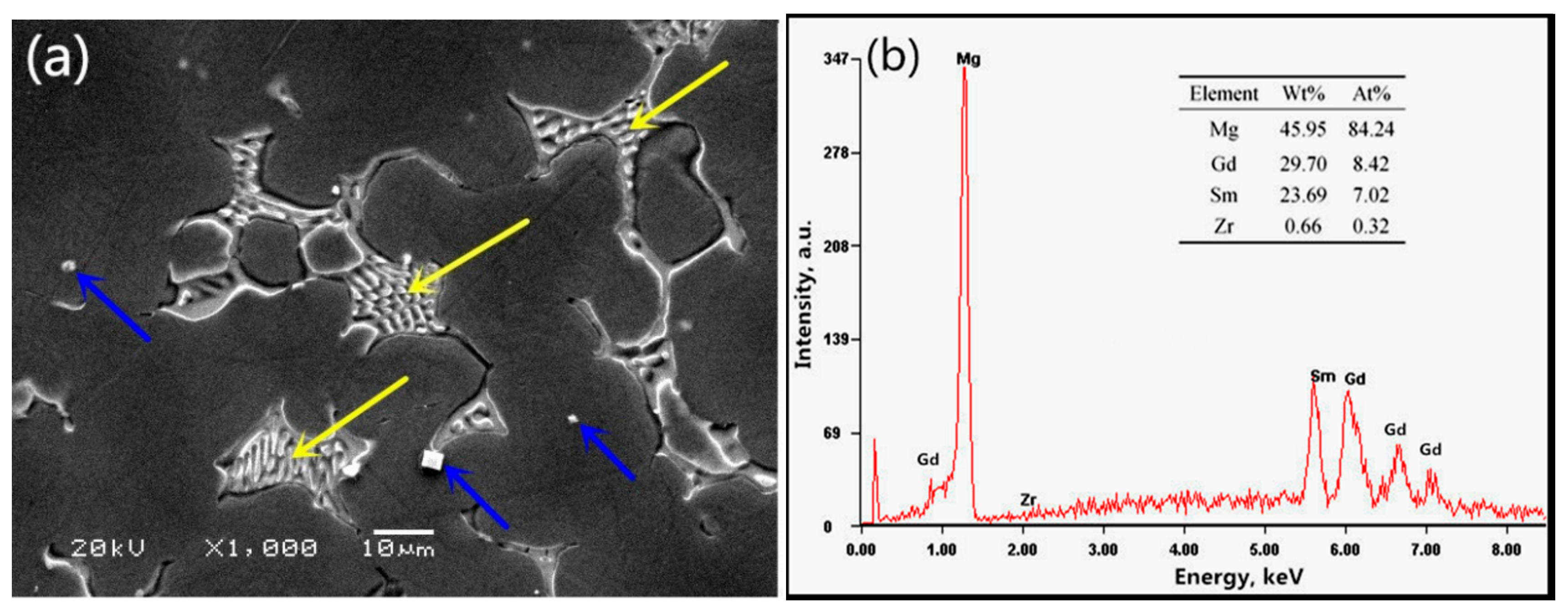
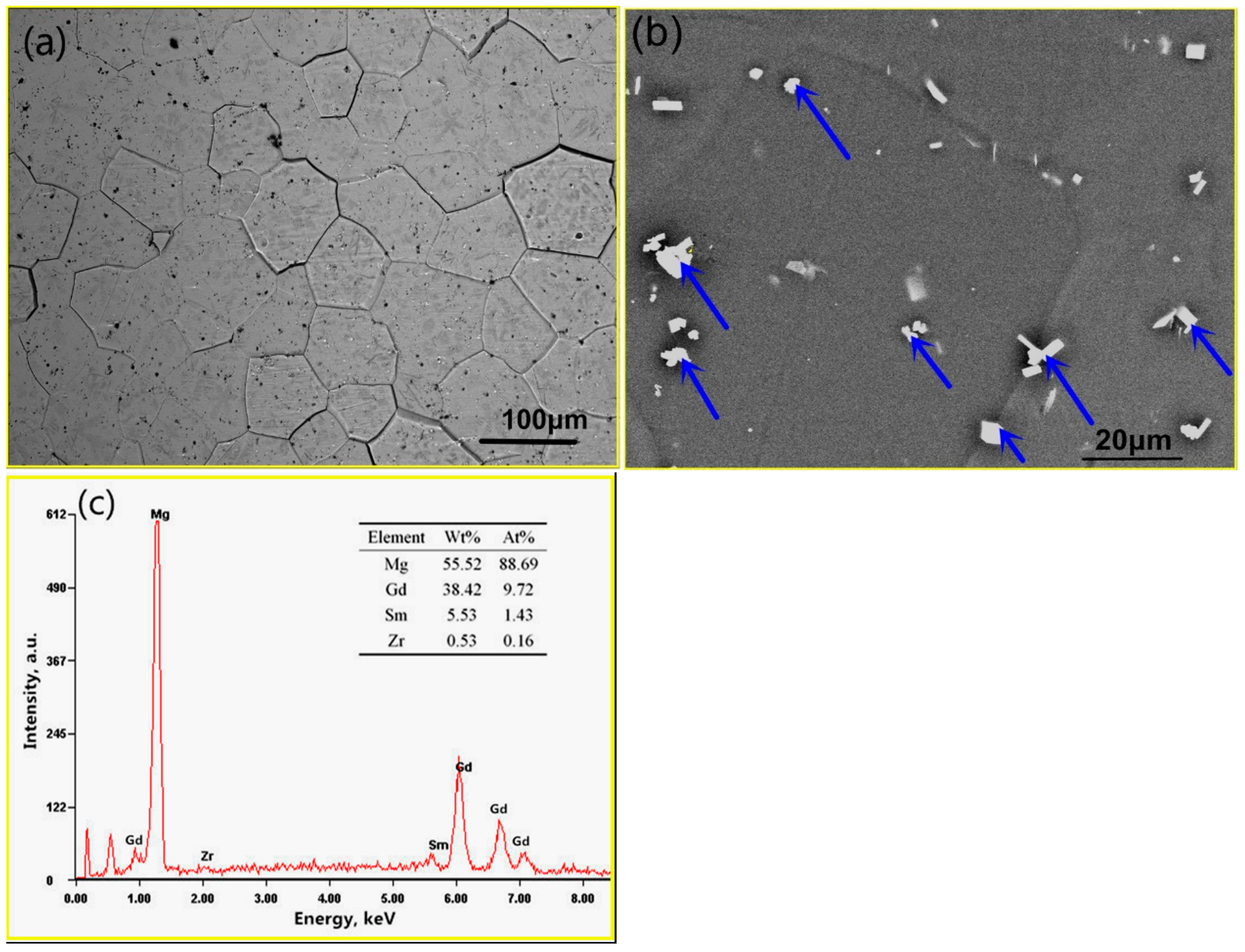

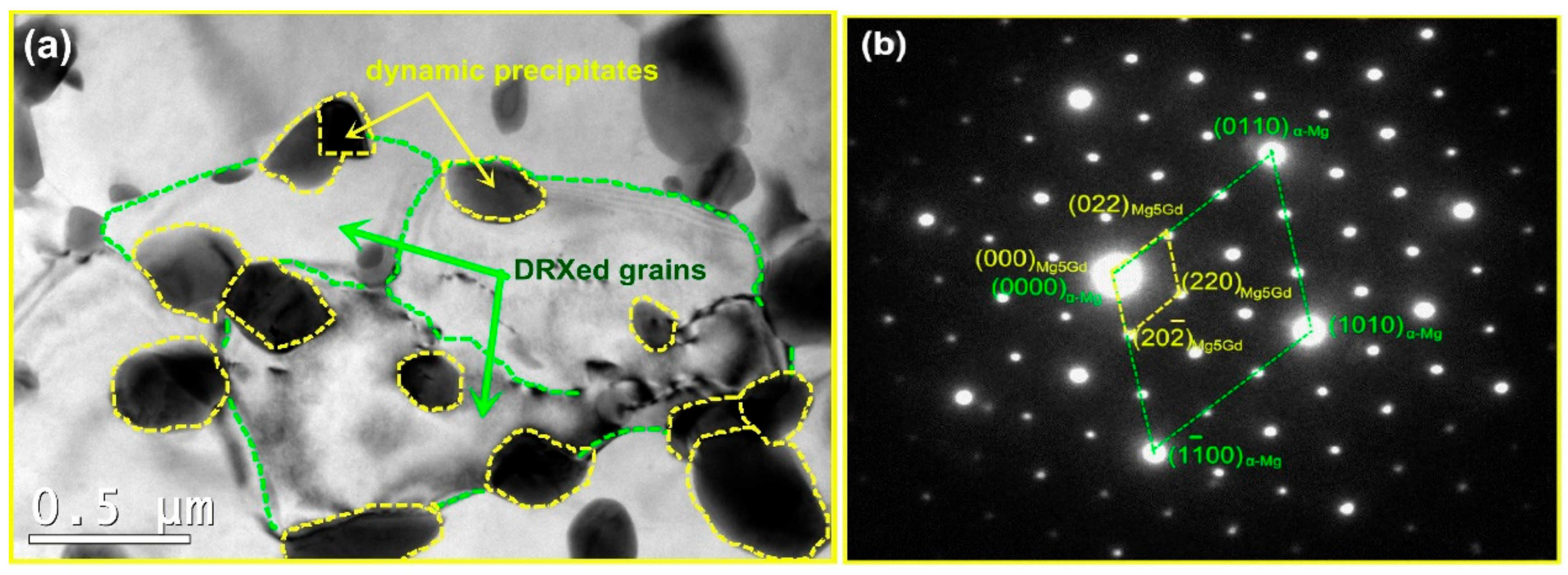


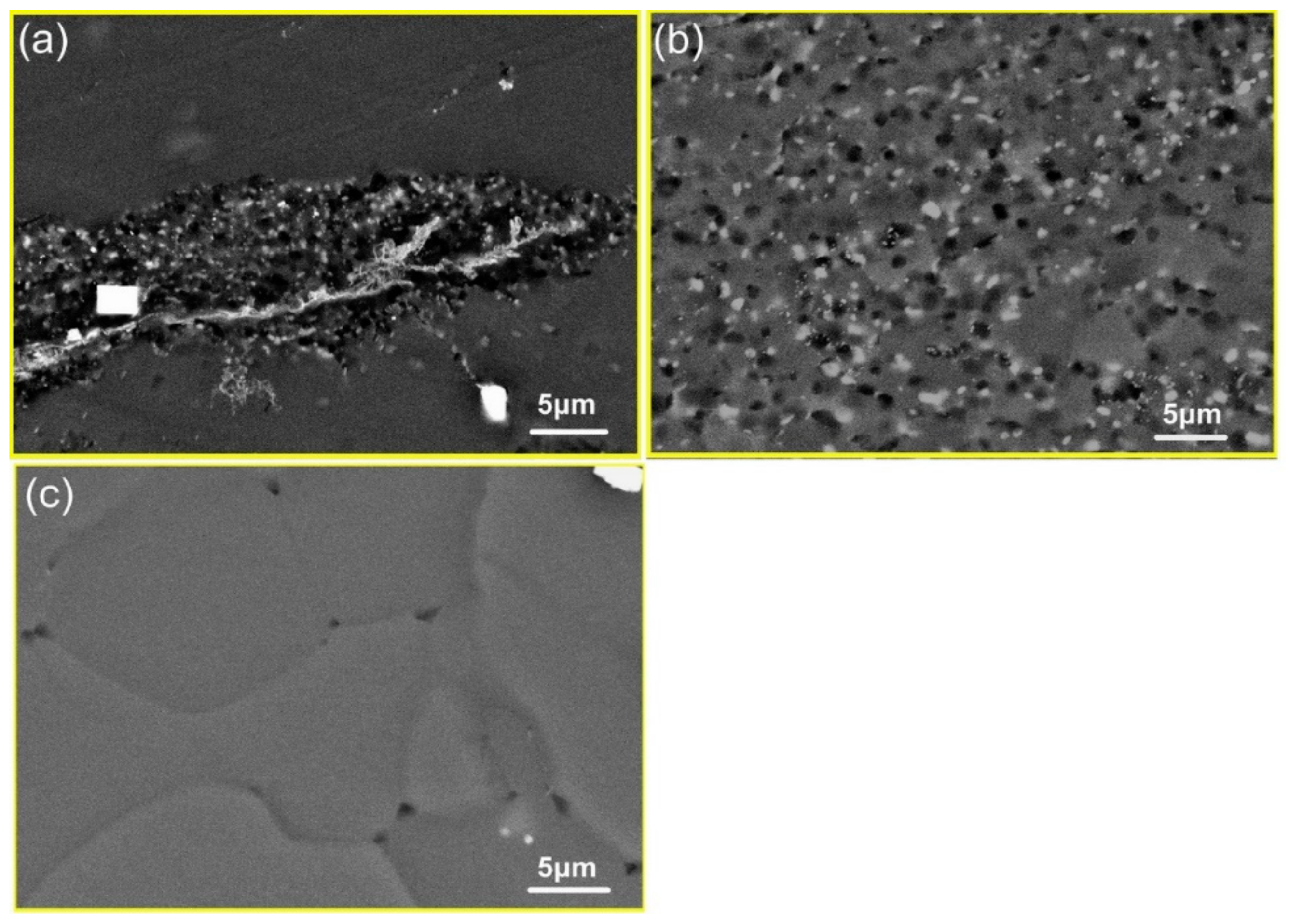

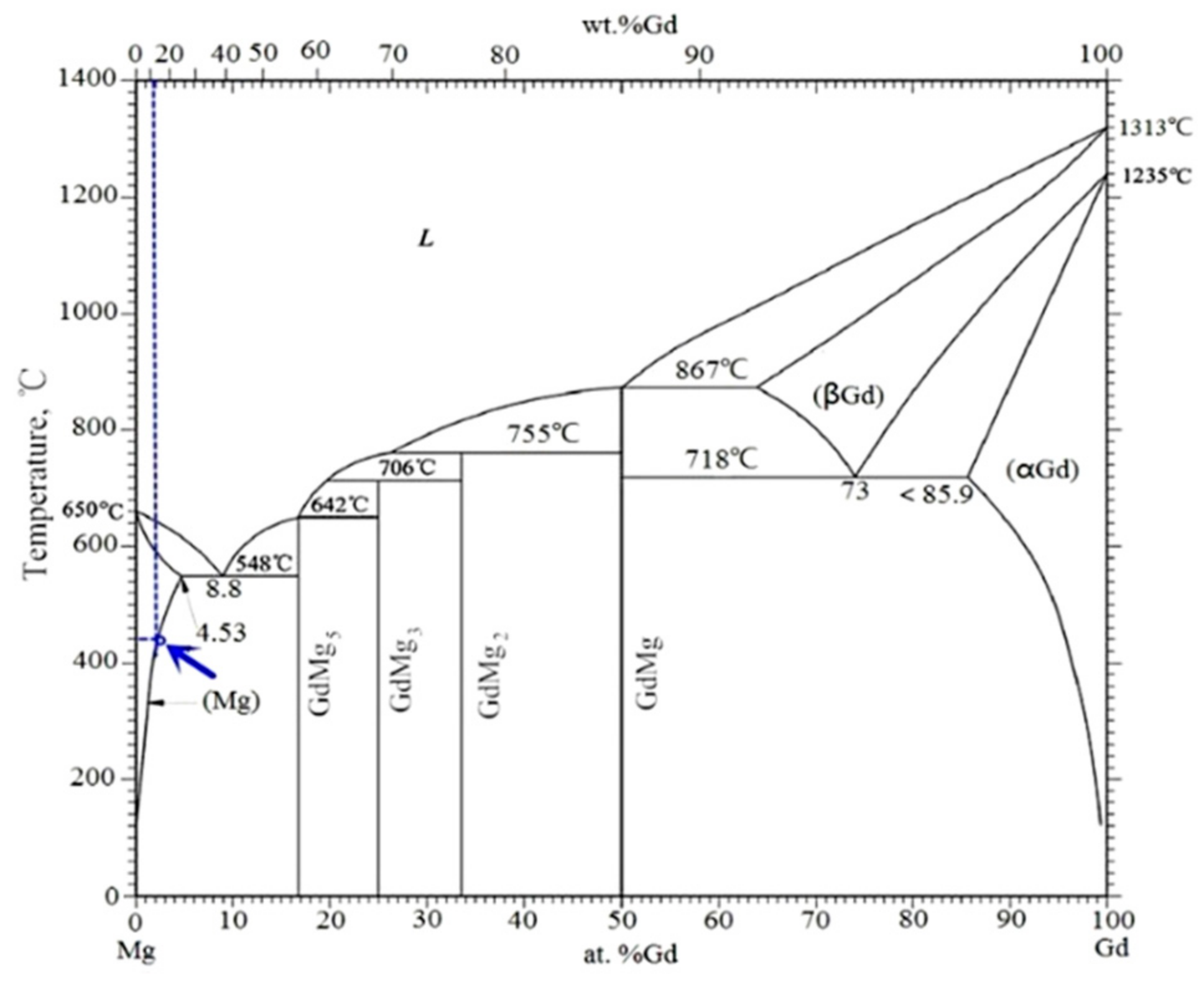
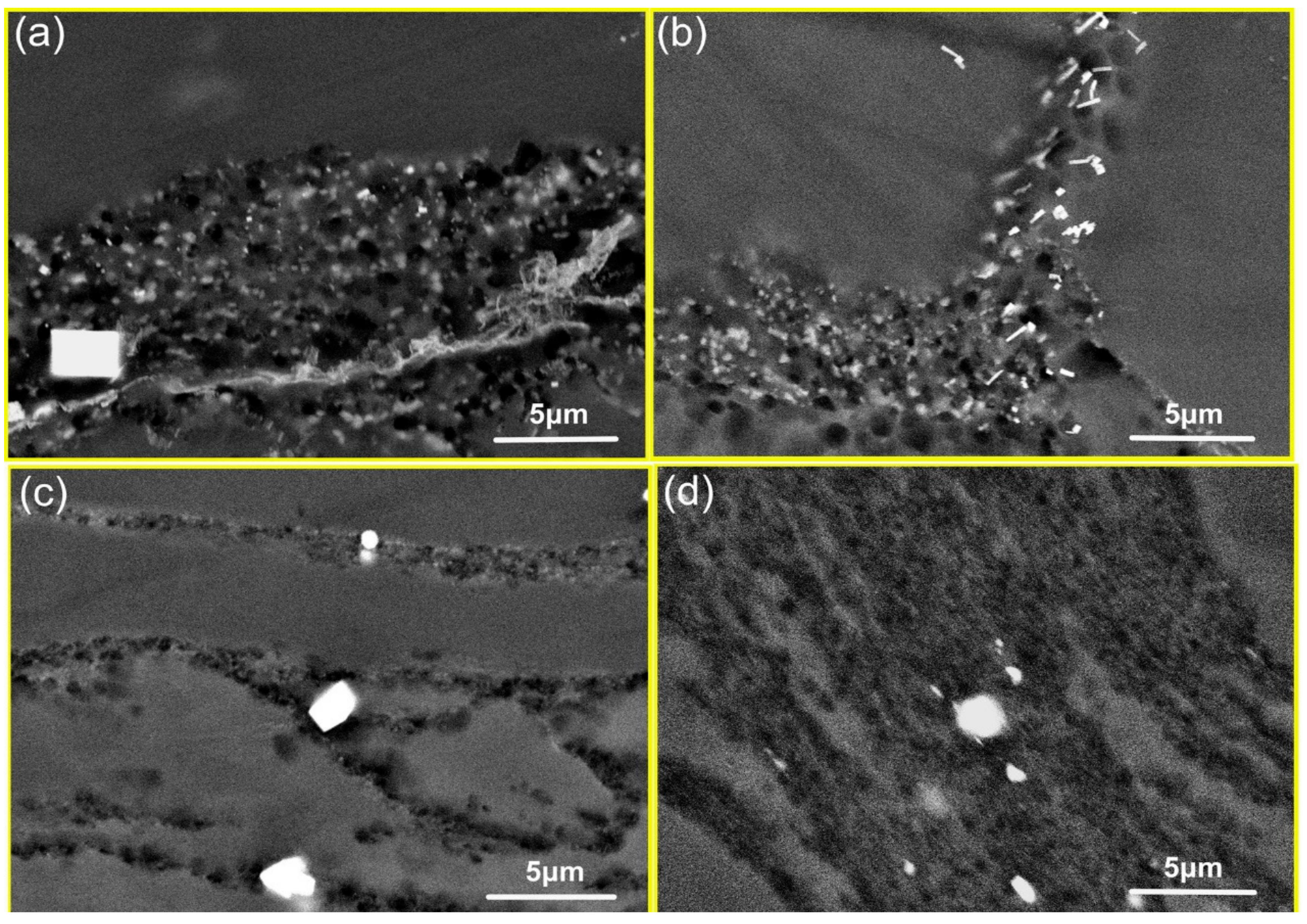
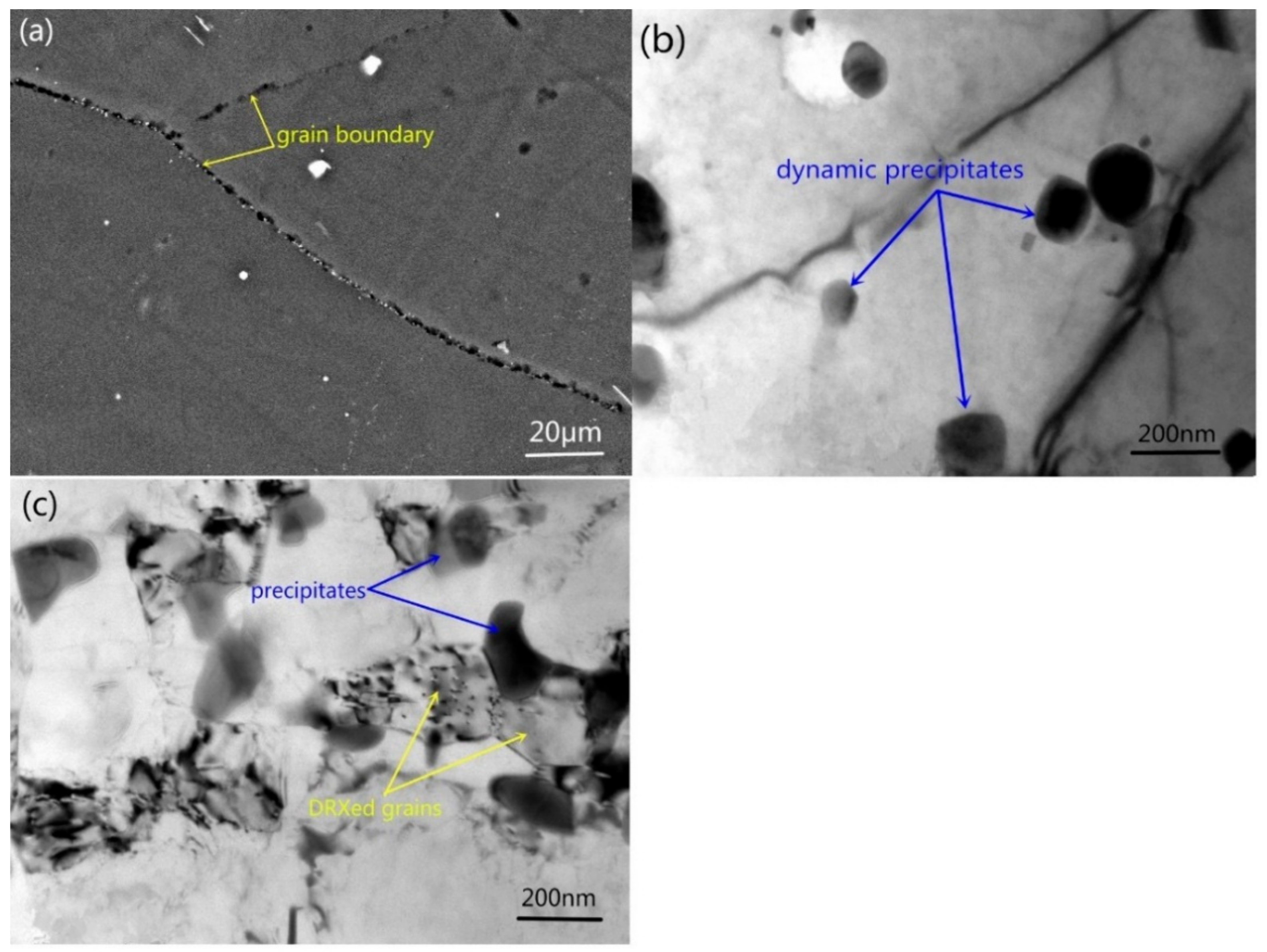

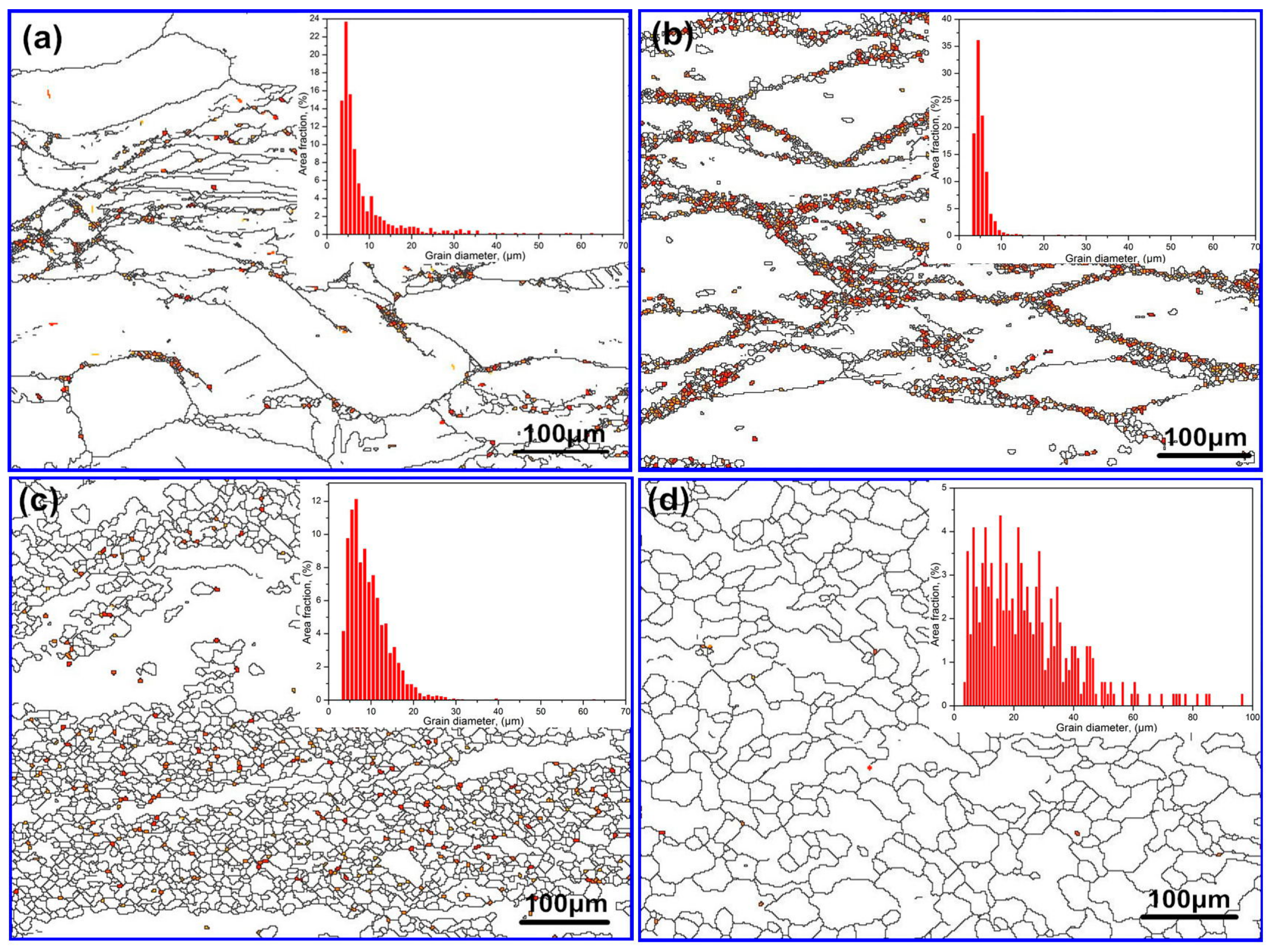
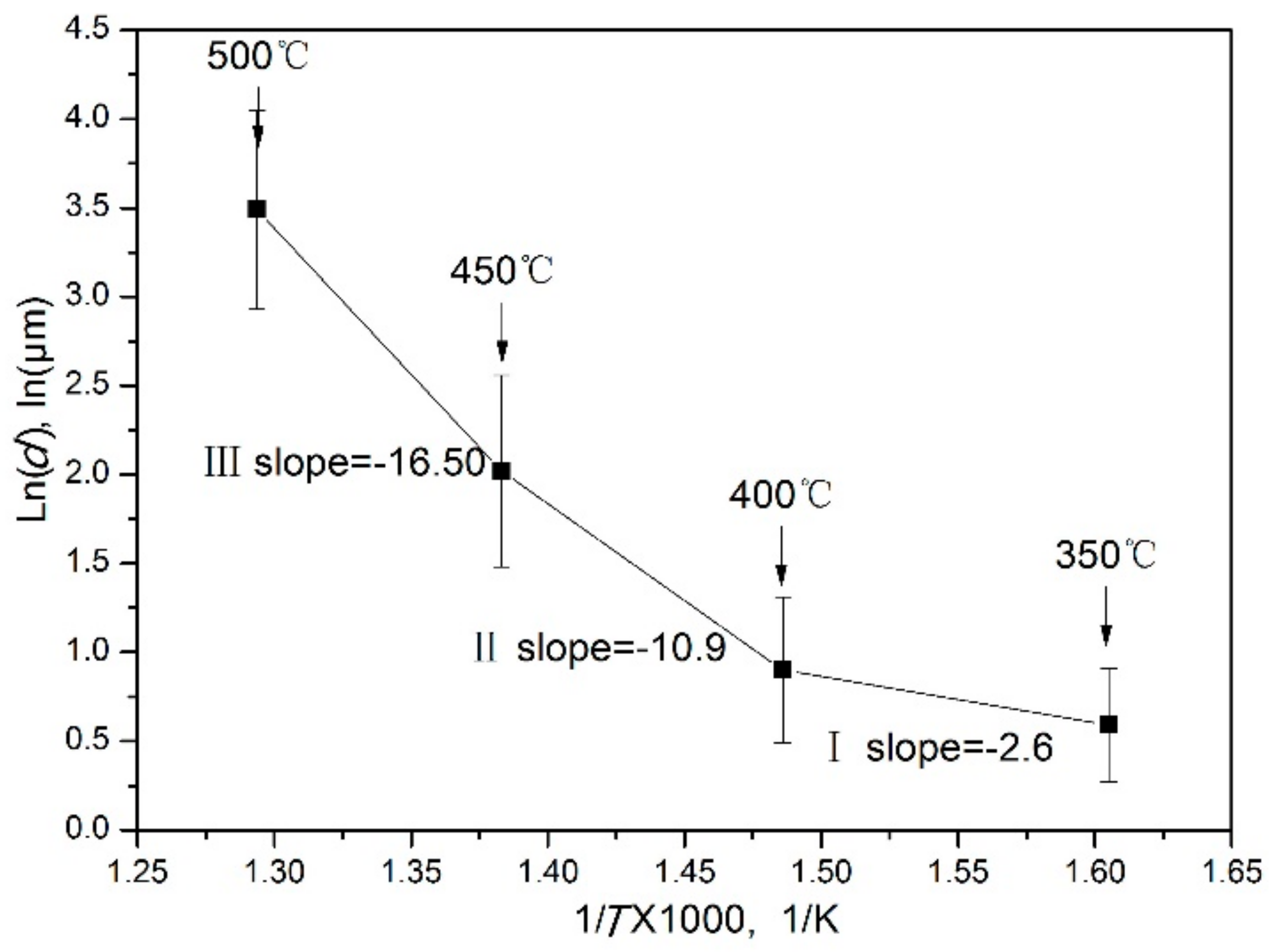
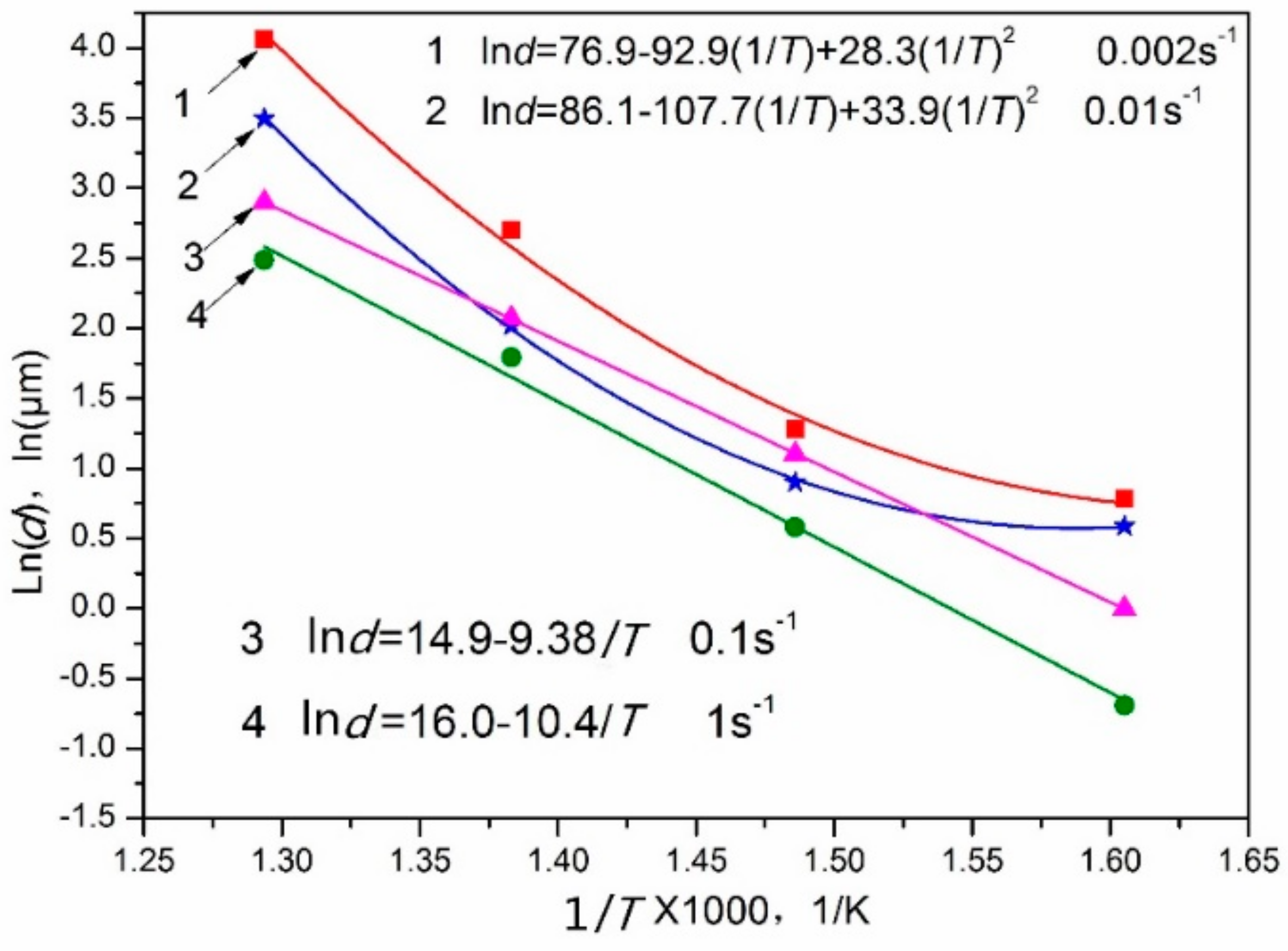

© 2018 by the authors. Licensee MDPI, Basel, Switzerland. This article is an open access article distributed under the terms and conditions of the Creative Commons Attribution (CC BY) license (http://creativecommons.org/licenses/by/4.0/).
Share and Cite
Zhu, L.; Li, Q.; Zhang, Q.; Chen, X. Dynamic Precipitation in Mg–8.08Gd–2.41Sm–0.30Zr Alloy during Hot Compression. Materials 2018, 11, 2147. https://doi.org/10.3390/ma11112147
Zhu L, Li Q, Zhang Q, Chen X. Dynamic Precipitation in Mg–8.08Gd–2.41Sm–0.30Zr Alloy during Hot Compression. Materials. 2018; 11(11):2147. https://doi.org/10.3390/ma11112147
Chicago/Turabian StyleZhu, Limin, Quanan Li, Qing Zhang, and Xiaoya Chen. 2018. "Dynamic Precipitation in Mg–8.08Gd–2.41Sm–0.30Zr Alloy during Hot Compression" Materials 11, no. 11: 2147. https://doi.org/10.3390/ma11112147




